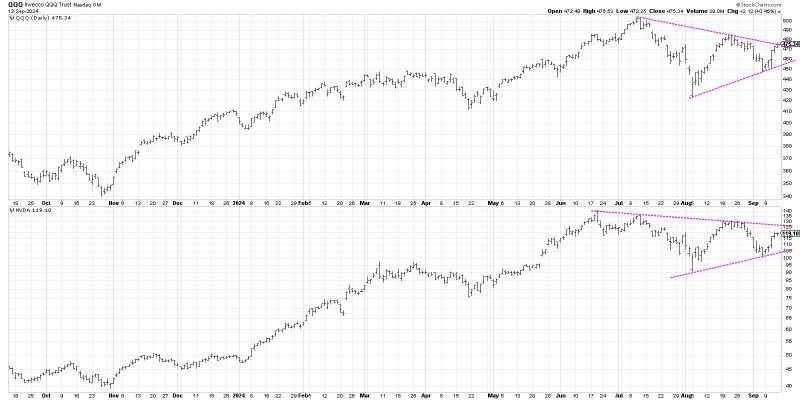Analyzing the Potential Scenarios for QQQ Investments
Scenario 1: Bullish Market Trends
In this scenario, the overall market sentiment is positive, driving QQQ (PowerShares QQQ Trust) prices higher. Strong corporate earnings, robust economic data, and favorable macroeconomic conditions contribute to the bullish trend. Technology companies within the QQQ portfolio continue to innovate and generate substantial profits, attracting investors seeking growth opportunities. As a result, QQQ experiences steady upward momentum, outperforming the broader market indices.
Investors with a bullish outlook on the market may choose to allocate a larger portion of their portfolio to QQQ, expecting continued price appreciation. However, it is essential to monitor key indicators such as economic growth, interest rates, and geopolitical factors to assess the sustainability of the bullish trend.
Scenario 2: Market Volatility and Corrections
In this scenario, market volatility intensifies, leading to periodic corrections in QQQ prices. External factors such as geopolitical tensions, inflation concerns, or unexpected regulatory changes could trigger sell-offs and increased uncertainty among investors. Tech stocks, which represent a significant portion of QQQ holdings, may be particularly vulnerable to market swings.
Investors in QQQ need to be proactive in managing risk during periods of heightened volatility. Implementing hedging strategies, diversifying the portfolio, and maintaining a long-term perspective can help mitigate the impact of market fluctuations. Staying informed about company-specific developments and macroeconomic trends is crucial for making well-informed investment decisions in a volatile market environment.
Scenario 3: Bearish Market Conditions
In this scenario, a prolonged bear market ensues, characterized by widespread pessimism, declining corporate earnings, and economic slowdown. QQQ prices face significant downward pressure as investors rotate out of high-growth tech stocks in favor of defensive assets. Negative sentiment towards the technology sector, regulatory challenges, or global economic headwinds could contribute to the bearish outlook for QQQ.
Investors with exposure to QQQ in a bear market should consider adjusting their investment strategy to preserve capital and minimize losses. Implementing risk management techniques, such as setting stop-loss orders and rebalancing the portfolio towards more defensive sectors, can help navigate a challenging market environment. Additionally, identifying value opportunities within the tech sector during downturns may present long-term buying opportunities for astute investors.
In conclusion, the scenarios outlined above provide a framework for assessing potential outcomes for QQQ investments in varying market conditions. By staying informed, maintaining a diversified portfolio, and adapting to evolving market dynamics, investors can navigate the uncertainties of the market and position themselves for long-term success in QQQ investments.




























